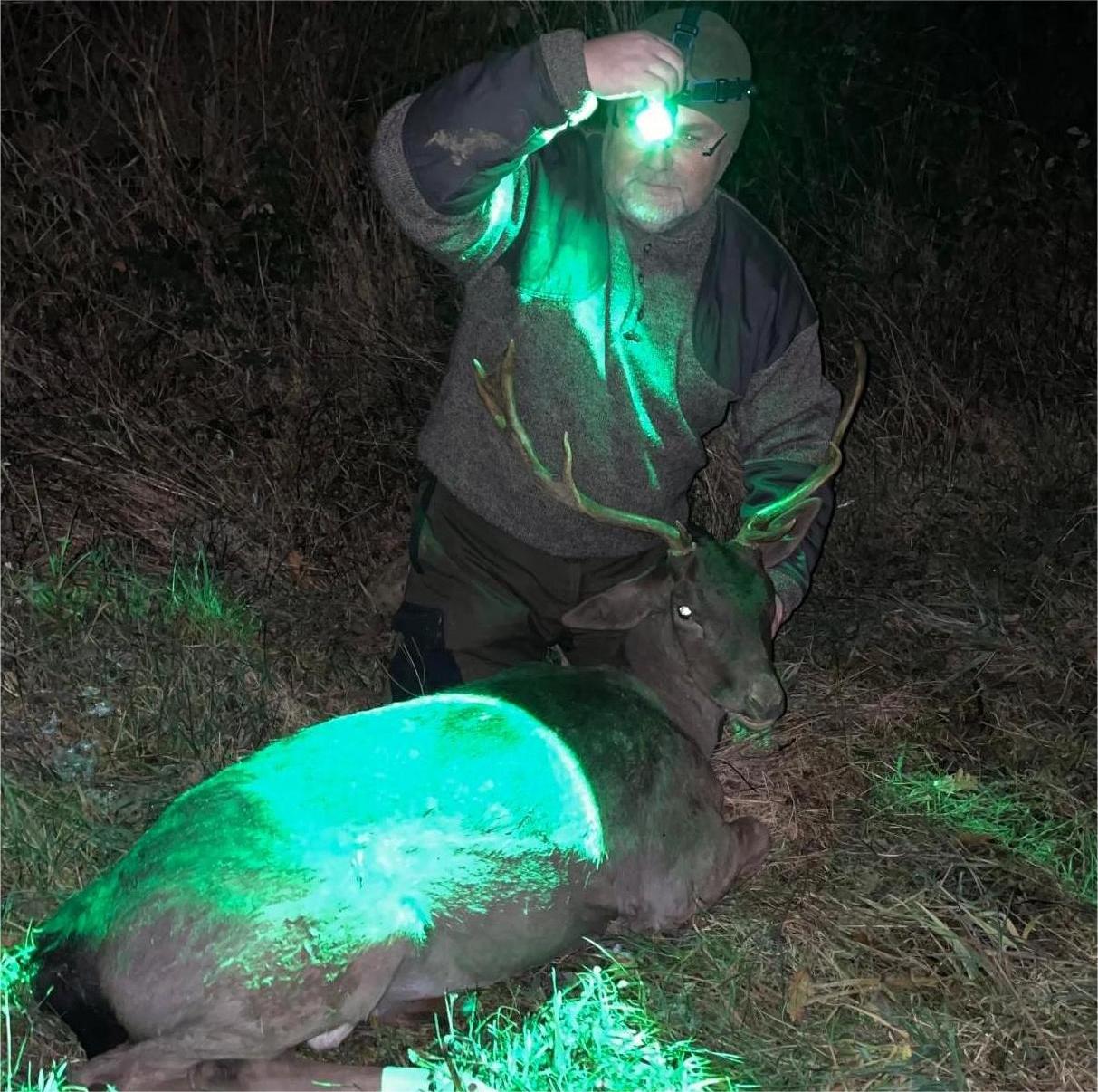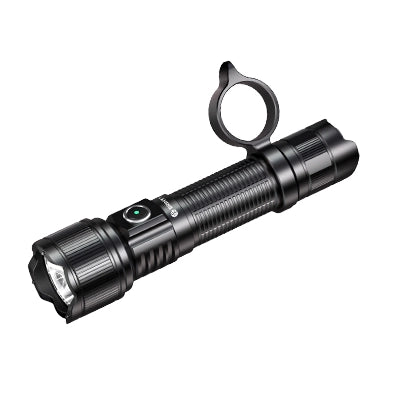— A Practical Guide for Hunters in Nordic and Cold-Weather Environments
Long hunting trips in the Nordic wilderness often mean freezing temperatures, extended tracking sessions, and limited access to charging resources. In these conditions, managing battery life for your hunting flashlight, headlamp, or weapon-mounted torch becomes a survival skill — not just a convenience.
This guide will help you optimize battery runtime, charging strategy, backup planning, and avoid power drain failures caused by cold environments. Whether you use a USB rechargeable hunting flashlight, 18650 battery-powered torch, or long runtime headlamp, this article will give you real field-proven strategies.
Why Battery Management Matters in the Wilderness
Unlike casual night walking or camping, hunting flashlights are used in tactical, prolonged periods of operation — for scanning fields, blood tracking, signaling, or navigating dense forest.
In Nordic regions where temperatures can drop below -10°C, battery performance can decrease by up to 40%, especially with lithium-ion 18650 or 21700 cells.
A dead flashlight in such conditions doesn’t just mean inconvenience — it can compromise stealth, safety, and hunt success.

Understanding Battery Types for Hunting Flashlights
| Battery Type | Best For | Runtime Performance | Cold Weather Behavior |
| 18650 Lithium-Ion | Long-distance throw lights & tactical use | Long runtime with high output | Runtime decreases ~20–30% in sub-zero conditions |
| 21700 High-Capacity Cell | Heavy-duty hunting flashlights (e.g., T40/T18) | Longer runtime, ideal for all-night hunts | Better cold resistance than 18650 |
| CR123A Disposable | Emergency backup use | Stable voltage output | Works well in low temperatures but costly |
| AA/AAA Alkaline | Low-power headlamps or backup lights | Short runtime, not ideal | Loses capacity quickly in cold weather |
Recommendation: For serious hunting, stick with 18650 / 21700 rechargeable batteries, and always carry a secondary charged cell in a thermal-protected case.
Cold Weather Battery Drain — What Hunters Must Know
Cold climate causes electrochemical resistance inside the battery, resulting in:
- Voltage drop → flashlight suddenly switches to low mode
- Shortened runtime even if battery shows 70–80% charge indoors
- Auto shut-off protection in smart flashlights to prevent damage
Pro Tip:
Always store spare batteries close to your body (inside jacket pocket) instead of a backpack. Body heat slows down cold-induced power loss significantly.
Charging Strategy for Long Hunting Trips
When you're packing gear for a multi-day hunting expedition, battery strategy matters as much as ammunition or optics setup.
Smart Charging Checklist
| Step | Action | Why It Matters |
| 1 | Fully charge all USB-rechargeable flashlights before departure | Avoid weak initial power output |
| 2 | Check each 18650/21700 battery’s health level | Older batteries drain faster under high brightness |
| 3 | Label batteries by charge level or cycle count | Prevents confusion during quick swaps |
| 4 | Carry a compact USB-C power bank (at least 10,000mAh) | Enables mid-hunt quick charging |
| 5 | Use fast-charging flashlights like Brinyte WT01 / T40 / HL28 USB Magnetic Charging | No need to disassemble flashlight to charge |
Battery Maintenance in Sub-Zero Conditions
To ensure maximum runtime and reliable ignition under freezing temperatures, follow these field-tested tips:
Cold Survival Techniques for Batteries
- Use insulated battery cases or wrap in microfiber cloth
- Avoid leaving flashlights directly exposed on gun rail when not in use — keep them under the jacket until ready
- Cycle light output — don’t run Turbo mode continuously in -15°C, alternate between Medium and High for efficiency
- If battery drops unexpectedly, warm it for 2–3 minutes in your pocket, then reinsert — voltage often recovers
How Many Batteries Should a Hunter Carry?
| Hunt Duration | Recommended Battery Setup |
| One evening / short hunt | 1 × fully charged battery + flashlight with USB emergency charging |
| Overnight tracking hunt | 2 × fully charged batteries + USB power bank |
| 3-day Nordic wilderness hunt | Minimum 3 batteries + USB rechargeable flashlight + power bank + emergency CR123A |
Field-tested loadout: For weapon-mounted lights like Brinyte T18 Artemis or T40, hunters commonly carry 2 × 21700 cells + 1 × CR123A backup torch.
Lighting Modes and Runtime Optimization
Modern hunting flashlights feature multiple brightness levels (Low / Mid / High / Turbo). Running Turbo continuously drains battery 3× faster with minimal visibility benefit.
| Mode | Use Case | Estimated Runtime (18650 battery) |
| Low (5–20%) | Map reading, close movement | 40–80 hours |
| Medium (30–50%) | Silent scanning, preserve battery | 8–12 hours |
| High (70–80%) | Blood tracking, general illumination | 4–6 hours |
| Turbo (100%) | Distant spotting or signaling only | 1–2 hours |

Best Practice for Nordic Hunters:
Use Medium mode as your default. Switch to Turbo only for scanning far distances, then drop back immediately.
Energy Planning Mindset: Think Like a Marksman
Just as hunters don't fire unnecessary shots, don't use unnecessary lumens.
- Pre-plan flashlight usage according to hunting timeline (entry, ambush, tracking, exit)
- Keep one flashlight always in reserve, untouched — this becomes your "safety light"
- Use flashlights with battery indicator functions — Brinyte models show real-time voltage status to prevent accidental blackout.
Recommended Long Runtime Models by Brinyte
| Model | Battery Type | Runtime Strength | Best For |
|---|---|---|---|
| Brinyte T40 | 21700 Rechargeable | Long-distance throw + stable runtime in cold | Nordic mountain hunting |
| Brinyte HL28 | 18650 / USB Charging | Dual-mode (flood + spot) + fast recharge | Tracking after shot |
| Brinyte WT01 Apollo | USB magnetic recharge, 18650 | Safe charging on-the-go | General night navigation |
| Brinyte T18 Artemis | Interchangeable color modules, 21700 | Runtime-friendly color modes | Night predator hunting |

Quick Field Checklist Before Departure
- Fully charge flashlights
- Carry minimum 2 spare batteries
- Use USB-C or magnetic charging cable compatible with hunting flashlight
- Store batteries inside jacket lining
- Test runtime in Medium mode before actual hunt
- Bring power bank + cable if hunting multiple nights
- Keep a small CR123A backup light for emergencies
Frequently Asked Questions
1. How do I extend the runtime of my hunting flashlight during long trips?
Use Medium brightness, avoid constant Turbo mode, and carry fully charged spare 18650 or 21700 batteries.
2. Does cold weather affect 18650 battery performance for hunting lights?
Yes, cold temperatures can reduce battery capacity by up to 40%. Keep batteries warm inside your jacket to prevent voltage drop.
3. Are USB rechargeable hunting flashlights reliable for multi-day hunts?
Yes, as long as you pair them with a power bank and magnetic or USB-C charging cable for on-the-go top-up.
4. How many backup batteries should I carry for a 3-day hunting trip?
At least 2–3 fully charged batteries plus one emergency CR123A or USB rechargeable flashlight is recommended.
5. What battery type is best for hunting flashlights in cold climates?
21700 cells offer better cold resistance and runtime compared to standard 18650 batteries.
6. How do I avoid battery drain when using high-lumen hunting flashlights?
Limit Turbo mode usage to scanning only, then switch back to Mid mode to preserve power.
7. Can I charge my hunting flashlight directly in the field?
If your flashlight supports USB or magnetic charging, you can recharge it using a small power bank without removing the battery.

Final Thoughts: Battery Management is Part of Hunting Strategy
A flashlight failure is not a gear failure — it's a preparation failure.
By understanding battery chemistry, cold impact, charging discipline, and smart runtime control, hunters can ensure consistent illumination from dusk till dawn, even in extreme Nordic conditions.
A well-managed USB rechargeable hunting flashlight with reliable 18650/21700 cells is one of the most valuable survival tools in your kit.



